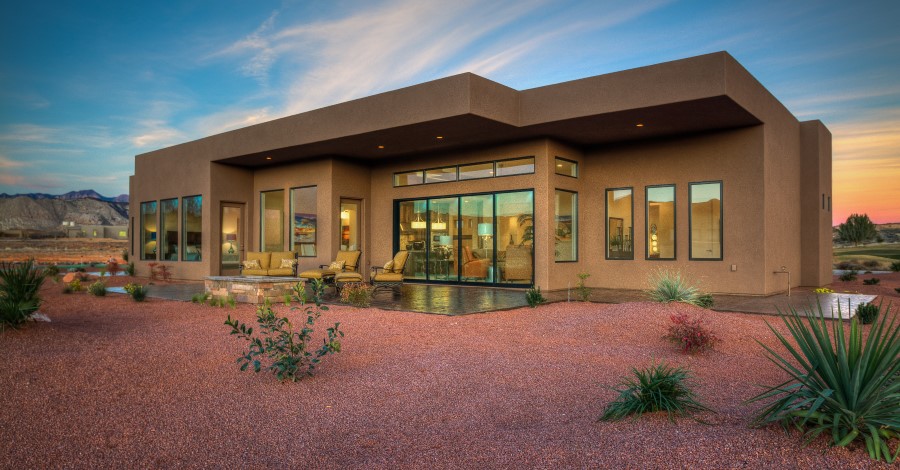Designing for a Desert Environment
High-performance finishes on aluminum fenestration can help desert home designs display natural colors, while managing heat

The sunny, warm, arid desert landscapes of California, Nevada, Arizona and New Mexico provide an appealing home location to lifelong residents, retirees and vacationing “snow birds.” The attractive qualities of this climate also present extremely challenging building conditions that require the highest performance finishes.
Such high-performance finishes on aluminum fenestration are specified to meet AAMA 611 “Voluntary Specification for Anodized Architectural Aluminum” and AAMA 2605 “Voluntary Specification, Performance Requirements and Test Procedures for Superior Performing Organic Coatings on Aluminum Extrusions and Panels.” Both industry standards are published by the Fenestration and Glazing Industry Alliance (FGIA). Class I anodic coatings and 70% PVDF resin-based architectural paint coatings most commonly are used for exterior aluminum building products that must withstand continuous outdoor exposure.
Homes designed for the desert climate often feature large roof overhangs and window awnings or shadowboxes to keep out the solar heat. White colors reflect light and specialty coatings can further enhance solar reflective qualities on these large surface areas.
Aluminum-framed windows and doors with high thermal performance support energy efficiency and comfortable interiors. Operable windows and expansive entrances also provide fresh air and ventilation, plus transcend boundaries between indoor and outdoor spaces. Traditional construction materials, like adobe or stone, help to naturally insulate homes and blend into their surrounding environment.
Complementing the biophilic building materials and local palette, windows and doors feature finished framing in tans, grays, beiges and earth tones. Extremely durable anodized finishes are available in a range of desert-compatible bronze tones. Textured painted coatings in clay-colored hues can mimic both the look and feel of adobe or stone for a continuous transition between wall and window.
While traditional earthen colors are common on desert home exteriors, their interiors may be a bright, white, modern design. Accents frequently appear in Southwestern shades of turquoise blue, succulent blossom orange, cactus grey-greens, aged leather browns and rustic wood tones.
Finishing partner considerations
Some finishing partners can provide window and door manufacturers and fabricators with a single-source solution. Different colors on the exterior and the interior aluminum framing may be achieved when paired with polyamide insulating strips as a thermal barrier. This improves thermal performance and optimizes energy efficiency, while maintaining the structural and long-term durability of the fenestration unit. This beneficial combination can be requested for rectangular windows and doors, as well as curved frames and geometric designs.
To achieve the highest performance finish supported with a full warranty, remember to:
- Form the metal framing and then have it painted or anodized.
- Use the assigned paint code provided by either the coatings system manufacturer or the finishing applicator.
- Specify AAMA 611 for anodize and AAMA 2605 for architectural paint coatings.
